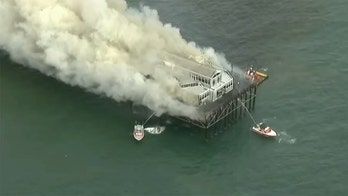Boeing's Starliner spacecraft, which embarked on its first manned mission in June, has been plagued by a series of issues, delaying the astronauts' return to Earth. This development highlights the importance of having multiple reliable options for accessing the International Space Station (ISS).
The anticipated return of Boeing's Starliner spacecraft to Earth has been delayed until at least July due to a series of issues that have emerged during its inaugural human-manned mission to the International Space Station (ISS). Astronauts Suni Williams and Butch Wilmore, who were aboard Starliner, remain at the ISS as engineers work to resolve the spacecraft's problems.
Boeing's Starliner spacecraft is a result of NASA's Commercial Crew Program, which was initiated after the retirement of the space shuttle in 2011. The program aims to foster private-public partnerships in space exploration, with Boeing and SpaceX being awarded contracts to develop spacecraft that would reduce the reliance on Russia for transporting astronauts and cargo to the ISS.

Boeing's Starliner Glitch Delays Astronauts' Earthly Return
Despite initial delays in development, SpaceX berhasil launched its first manned craft to the ISS in 2020 and has since completed multiple successful missions. Boeing's manned mission, however, has faced several setbacks, including technical glitches and parachute issues.
The successful launch of Starliner's first manned mission on June 5 initially sparked optimism, but subsequent helium leaks in the propulsion system and faulty thrusters have necessitated repairs that have extended the astronauts' stay at the ISS.

Boeing's Starliner Glitch Delays Astronauts' Earthly Return
According to statements from Boeing, the helium leaks are now stable and do not pose any concerns for a return mission. Engineers have also managed to restore four out of the five previously inoperative thrusters to normal operation.
Starliner remains docked at the ISS, where it can remain for up to 45 days. A new date for the astronauts' return to Earth has not been determined.

Boeing's Starliner Glitch Delays Astronauts' Earthly Return
The situation underscores the need for NASA to have multiple reliable options for accessing the ISS, as emphasized by Makena Young, a fellow with the Aerospace Security Project at the Center for Strategic and International Studies.
"It's a great point to underscore as well, that these astronauts are not stranded because NASA does have this other system that is reliable and proven," Young said, referring to SpaceX's Dragon Crew spacecraft.

Boeing's Starliner Glitch Delays Astronauts' Earthly Return
Redundancy in space exploration is crucial to ensure that astronauts can be safely transported to and from the ISS even when one system encounters problems. NASA's reliance on multiple providers for its human spaceflight program serves to mitigate risks and guarantees the continued success of space exploration.












